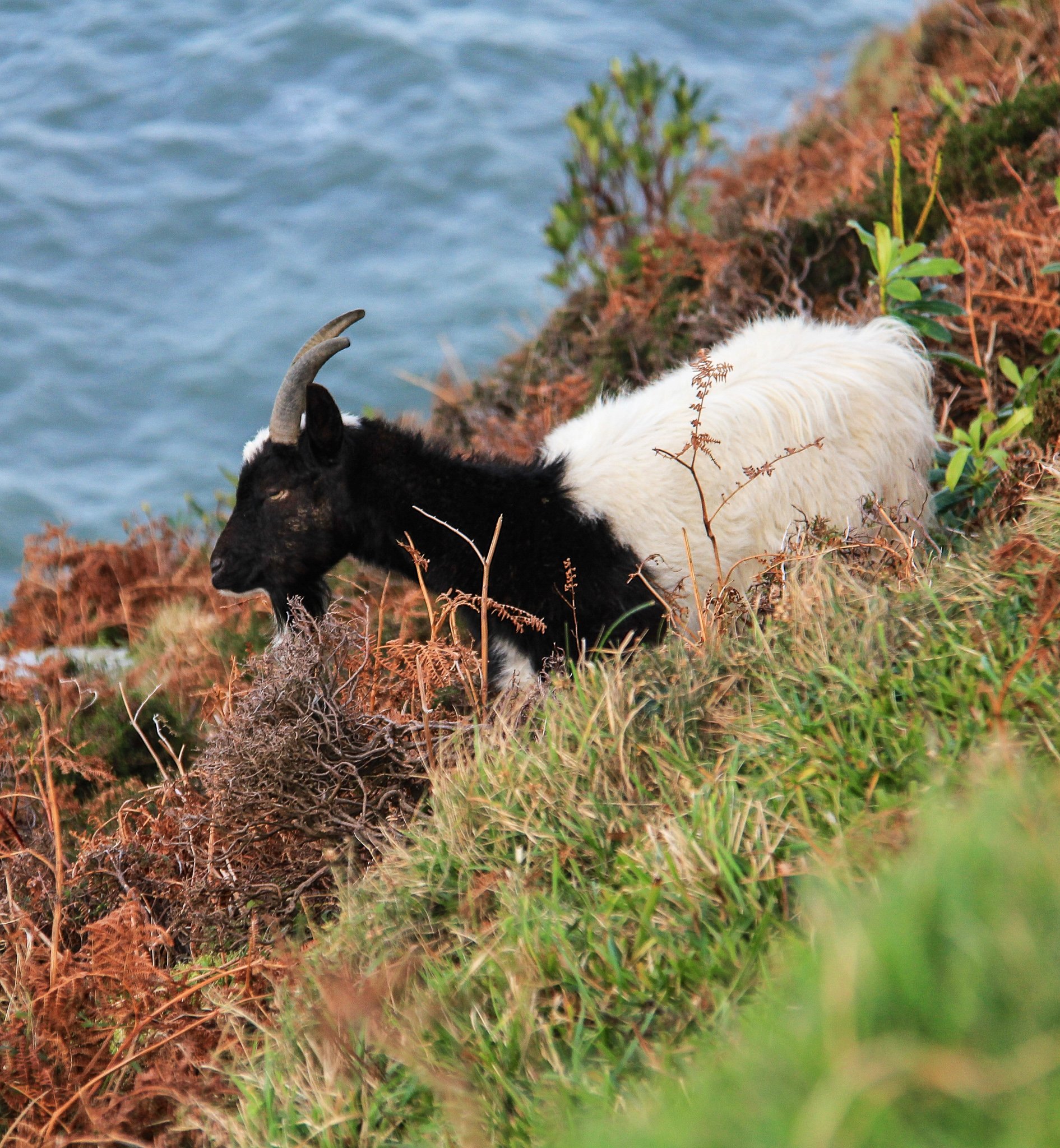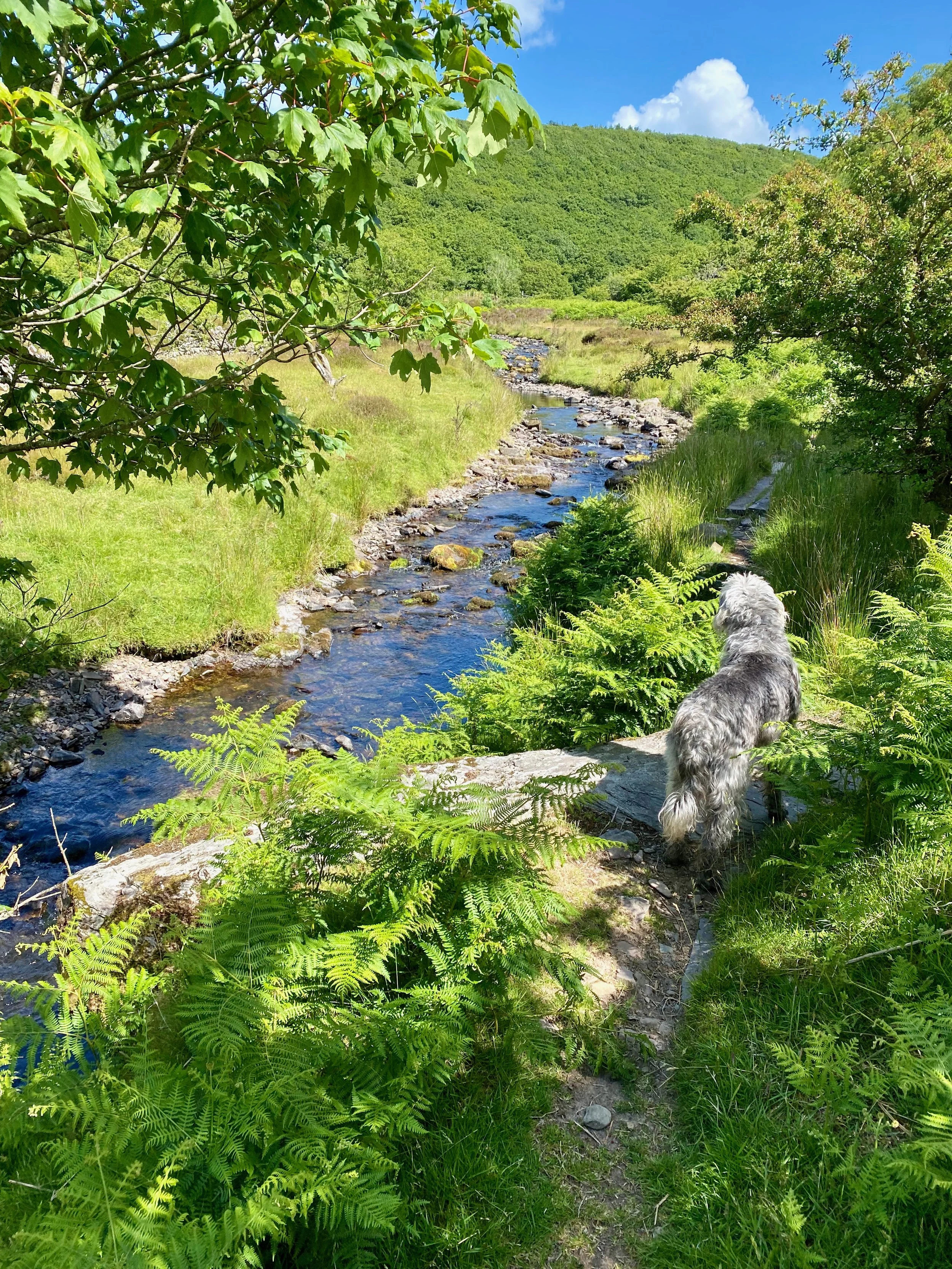Exmoor Walks: Lynton and Lynmouth
Lynton and Lynmouth enjoy the most spectacular panoramas in England. It's no exaggeration; I have trawled mentally through every burg I know and cannot think of any town or village that compares with the sheer drama of this perpendicular place.
Anyone who has ridden on the famous Lyn Cliff Railway will know what I mean. Stand on the outer platform of the ascending car and it's the nearest thing to taking off in a helicopter you can experience without leaving the ground.
Unusual shot of Lyn Cliff Railway carriage being refurbished in winter
Top of the funicular railway at Lynton
The higher you go, the more grandiose the whole scene becomes, which is not surprising really given that the tallest cliffs in England are just across the bay. Taking a ride on the railway would be the easy way to start this walk having strolled down the riverside to the sea from the bus stop – but we thought we’d better get in a bit of exercise after sitting on the top of the bus so walked up the zigzag path which begins just to the left of the funicular.
Dated shot of Lynmouth - the old hotel up in top left no longer there and being replaced
I warn you, the Victorians didn't call the place Little Switzerland for nothing. This is a real climb that takes you very steeply up 500 feet. Close to the top, just as you are about to enter Lynton, you will see that the coast path sets off to the west and there’s a sign pointing along it to the Valley of Rocks – and this is where we are headed.
I do know a number of people who tremble at the mere thought of walks that boast an altitudinous aspect – if you are one of these vertigo sufferers, then this part of the route is not for you. There’s nothing dangerous or arduous about it, but the hillside does plunge rather alarmingly towards the sea way, way, beneath. The local wild goats don’t seem to mind the savage slopes, but can be seen calmly munching down along the precipices with the same equanimity the average sheep shows in the average flat field.
But never mind the drop, enjoy the absolutely amazing views that stretch west along the vertiginous coast instead. These are some of the best coastal views in England. After about a mile and a half of this maritime/alpine mix, the path finds a vast opening in the slopes which introduces it to the famous Valley of Rocks.
The poet Coleridge loved it here and referred to the “commotion of the elements” and both William and sister Dorothy Wordsworth joined him, naming it “The Valley of Stones”. R.D. Blackmore made it the setting for Mother Melldrum’s cave in Lorna Doone, but it’s Robert Southey’s description I like best - he called the place: “The palace of pre-Adamite kings” and said it contained “the very bones and skeleton of the earth.” Indeed, he went to claim the Lynton and Lynmouth area to be “The finest spot that I ever saw” with the exception of Cintra in Italy.
Just inland from the coast path there’s the nation’s most dramatically placed traffic roundabout, situated dead in the centre of the Valley of Rocks – and from there it was a simple matter of turning left and walking up past the nation’s most dramatically situated cricket pitch to the west end of Lynton.
On the way we doffed our caps to Mother Melldrum who, for all I know, still lurks up in the rocks of the Devil’s Cheese-ring. It’s the stack of vertical rock that sits a quarter way up the cleave. If you take a detour up to it you find it’s deceptively massive, but manages to be dwarfed by the general scale of the valley.
But we had a bus to catch and made our way up to the east end of the cleave which then leads you directly into Lynton’s main street. At the top of Lee Road live the Poor Clares. How poor they are I do not know, but the nuns have a large and dignified looking convent which is occasionally open to the public.
Lynton cricket pavilion
Continuing down the main-street you pass the imposing town hall with its happy mixture of architectural styles. Gothic, neo-Tudor and art nouveau all combine to make the wonderful old place look like something dreamed up in some baroque fantasy by Sir Arthur Conan-Doyle. Actually Sir Arthur officially opened the place just over 100 years ago and in a way his man Sherlock Holmes paid for it. The building was funded by Sir George Newnes, part of whose wealth came from publishing Conan-Doyle's stories.
Continuing again along the main-street we come to Church Hill past the vast Valley of Rocks Hotel. Adjacent to this there’s the church and graveyard where there’s a seat commemorating the life of the mellifluously named Manners Nightingale.
North Walk Hill passes between the graveyard and the hotel and leads to the zigzag paths that descend to Lynmouth. You cross the railway twice before regaining the seafront where you can dawdle, if you’ve time, and admire the Rhenish Tower on the old stone quay.
You might also take a turn around the display in the Flood Memorial Hall and take a look at the photographs of the infamous Flood Disaster that almost completely destroyed this community 56 years ago.

















